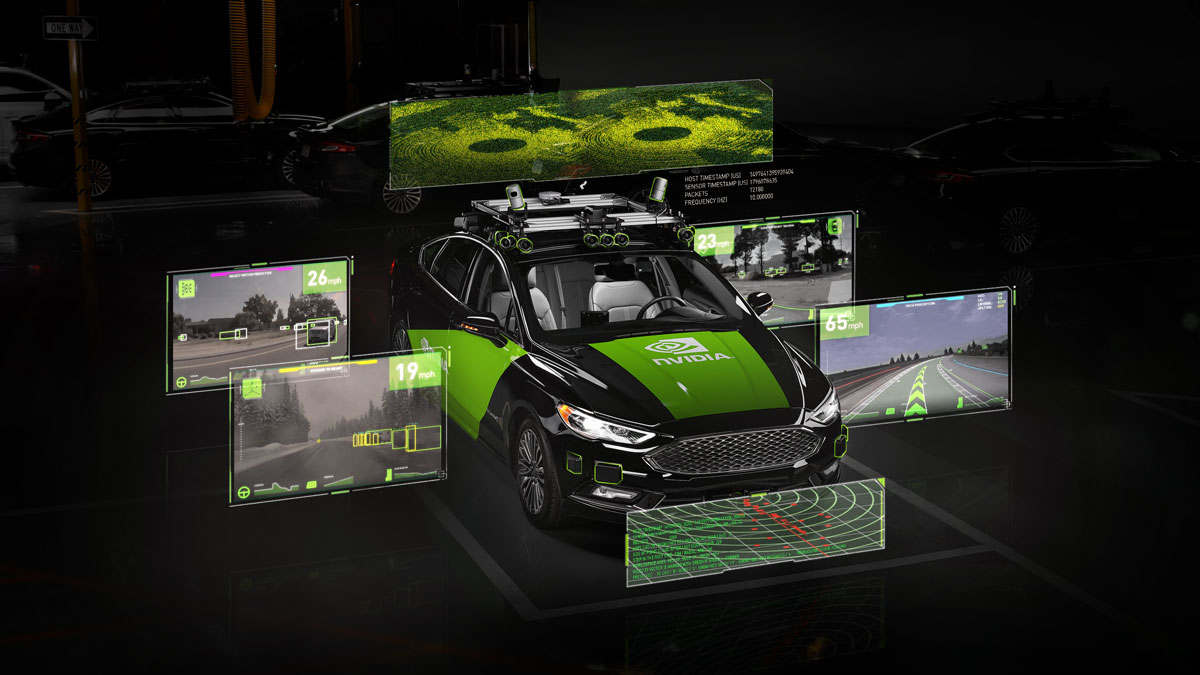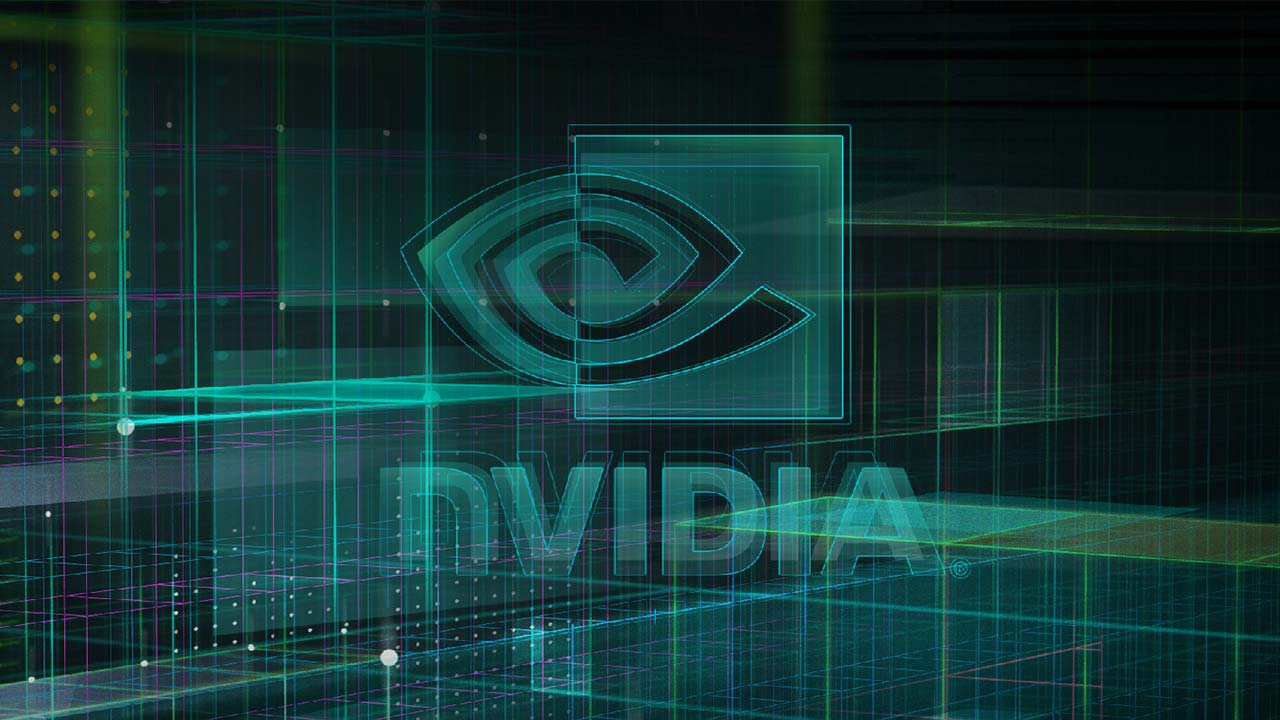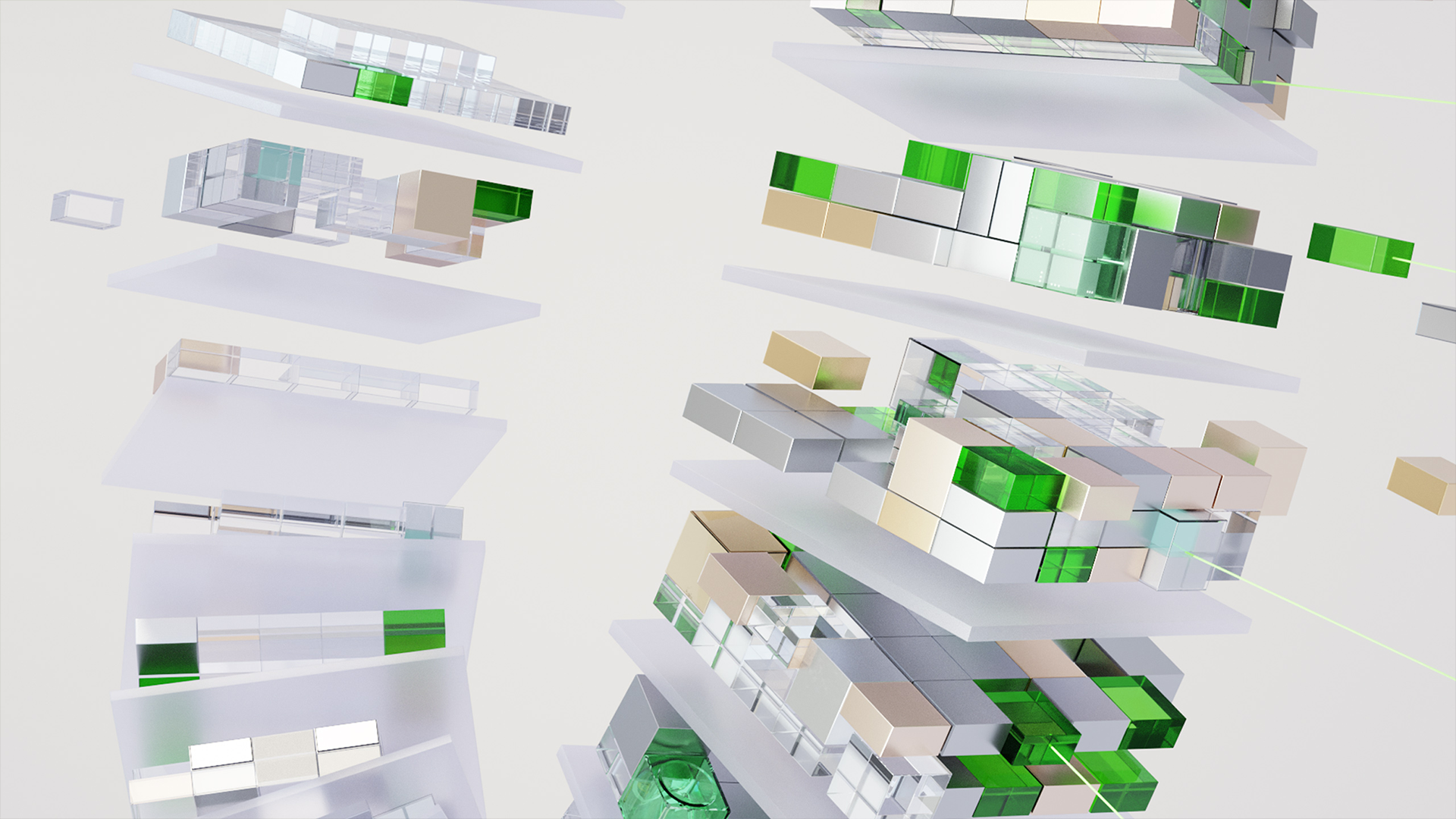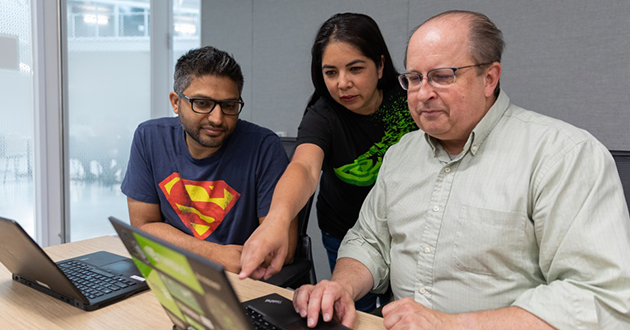Computer Vision
Computer vision (CV) enables devices like smart cameras to acquire, process, analyze, and interpret images and videos. CV applications–such as intelligent video analytics, image/video detection and recognition, and 3D reconstruction–have had a massive impact on companies across industries.
From retail, to security, healthcare, construction, manufacturing, consumer internet, and automotive there are benefits in computers recognizing and analyzing things in photos and videos in the same way that people do. With NVIDIA’s computer vision high performance and low energy consumption solutions, developers can speed up every part of the computer vision pipeline for deployment in production from the edge to the cloud and data centers, and quickly build and deploy cutting edge-models that deliver the high throughput and low latency solutions needed for real-time image and video processing.
Computer Vision Use Cases
Autonomous Vehicles and Robotics
Identify potential collisions and take preventative actions to avoid accidents, enhancing the safety and efficiency of autonomous vehicles and robotics systems.
Smart Cities and Urban Planning
Detect and segment various urban features like roads, buildings, parks, and public facilities, providing valuable insights to city planners and architects.
Healthcare and Life Sciences
Analyze and interpret complex medical data like radiology images and genomic sequences, enabling more precise diagnoses, personalized treatment plans, and innovative research.
Media and Entertainment
Automate content analysis, utilize motion capture for more lifelike animations, and craft immersive virtual reality experiences to enhance artistic expression and deepen audience engagement.
Computer Vision Benefits
Intelligent Automation
Enable intelligent automation in various industries by using computer vision to interpret and understand visual data, allowing machines to perform tasks traditionally done by humans.
Improved Quality Control
Enhance quality control processes by using computer vision to identify defects, anomalies, or inconsistencies in manufacturing lines, leading to better product quality and reduced wastage.
Object Detection and Tracking
Monitor and analyze traffic flow, detecting vehicles, pedestrians, and cyclists. This data helps optimize traffic signals, manage congestion, and improve overall transportation efficiency.
Public Safety and Security
Detect and track objects in real-time to alert authorities to potential safety hazards for pedestrians, such as jaywalkers or obstructions on sidewalks, promoting safer walking environments.
Computer Vision Solutions

Computer Vision SDKs and Libraries
NVIDIA offers a group of accelerated computer vision SDKs and libraries that speed up every part of the computer vision pipeline for deployment in production from the edge to the cloud. Our SDKs and libraries are production ready and can be easily adapted to fit your unique needs, empowering you with the flexibility and reliability necessary to integrate powerful visual perception capabilities into your application.
Learn More

Industry Solutions
NVIDIA offers multiple industry-specific computer vision software products and platforms. Whether you are interested in healthcare applications or automotive, there is an SDK that you can leverage.
- Healthcare: NVIDIA Clara™
- Robotics: NVIDIA Isaac Sim
- Automotive: NVIDIA DRIVE®
- Avatars: NVIDIA Avatar Cloud Engine (ACE)
- Video Conferencing: NVIDIA Maxine
- Industrial: NVIDIA Metropolis

Computer Vision Research
Learn what problems our computer vision research engineers and data scientists have been solving.
Read our latest publications
USD for Computer Vision
NVIDIA Omniverse is the data factory for AI that can be used to generate synthetic data and to validate AI models in a simulation environment using Omniverse Replicator. Omniverse is a modular development platform built on Universal Standard Description (OpenUSD), an extensible and open framework for 3D. OpenUSD enables developers to harness the power of 3D simulation environments and build AI applications that power robots, autonomous vehicles, and more.
Learn moreComputer vision techniques
Most techniques begin with a model–or a mathematical algorithm–that’s been trained with volumes of data to accomplish a specific task. Some of the common techniques include:
Classification
Classification involves identifying what object is in an image or video frame. Classification models are usually trained with a large dataset to identify simple objects like dogs, cats, chairs, or very specific ones like the type of vehicles in a road scene. The quality of the classification output depends on the training data used. The more the quantity and diversity of the training data, the higher the degree of precision.
Detection
Detection involves locating and localizing an object or multiple objects within an image or a video frame. The algorithm outputs a rectangular bounding box around the detected object to indicate its location in the image. Object detectors may be trained to detect cars, road signs, people, or other objects of interest within an image or a video frame.
Segmentation
Segmentation involves locating objects or regions of interest precisely in an image by assigning a label to every pixel in an image. This way, pixels with the same label share similar characteristics, such as color, or texture. Segmentation models are very commonly used in medical imaging for performing tasks like automatically detecting tumors in Magnetic Resonance Imaging (MRI) scans.
Your world, powered by computer vision
Get started with frequently asked questions
Computer vision is more than research. It delivers practical, real-world solutions that change lives. NVIDIA’s deep expertise in artificial intelligence and high-performance computing provides endless opportunities to meaningfully impact the world.
Get your CV questions answered


Get Started with Image Segmentation
New to computer vision? Get started with this free two-hour course on image segmentation offered by the Deep Learning Institute. Image (or semantic) segmentation is the task of placing each pixel of an image into a specific class. You’ll learn how to segment MRI images to measure parts of the heart by comparing image segmentation with other computer vision problems, experimenting with TensorFlow tools such as TensorBoard and the TensorFlow Keras Python API, and learning to implement effective metrics for assessing model performance.
Get Started
See what’s new in computer vision
Experience real-world computer vision applications
No challenge is too small and no company too big for computer vision. See innovative solutions in action—from startups to global manufacturers.
We’re partnering for success
Global challenges take a community. We support you in tackling challenges with powerful solutions to meet your exact needs.











